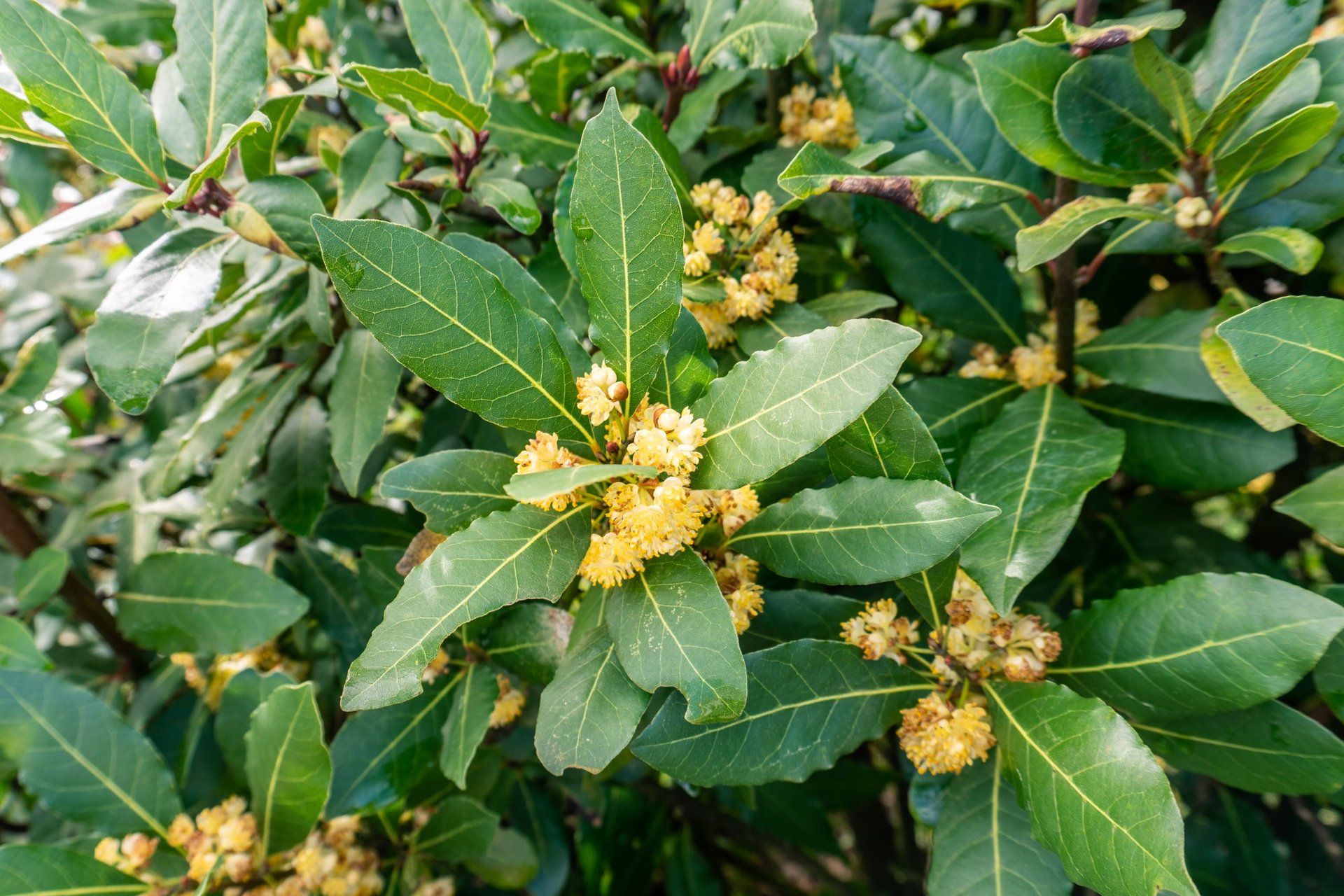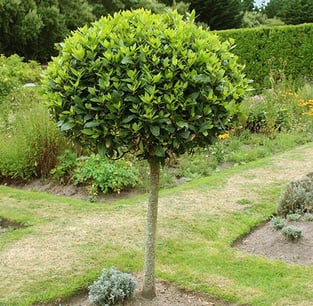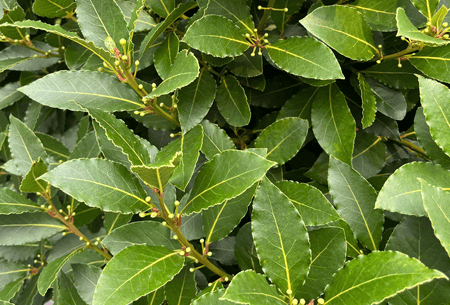
Plant of the Week: Bay Trees
Bay trees, also known as bay laurel or Laurus nobilis, are a timeless addition to any garden or kitchen. With their glossy evergreen leaves, rich history, and versatile uses, these elegant plants are more than just ornamental—they’re practical, too! Whether you’re a gardening enthusiast or a culinary adventurer, discover why bay trees deserve a spot in your home. From their aromatic leaves to their low-maintenance care, this guide will show you everything you need to know about growing and enjoying bay trees. Let’s dive in!
PLANTS
Grace Chen
2/24/20253 min read


Bay trees, also known as bay laurel or Laurus nobilis, are more than just a pretty addition to your garden. These evergreen shrubs have a rich history, culinary significance, and practical uses that make them a must-have for any plant enthusiast. Whether you're a seasoned gardener or a beginner, this guide will walk you through everything you need to know about bay trees. Let’s dive into five fascinating points about these versatile plants!
1. Bay Trees Are a Culinary Powerhouse
Bay leaves are a staple in kitchens worldwide, adding depth and aroma to soups, stews, and sauces. Fresh or dried, these leaves are a key ingredient in many Mediterranean and Indian dishes. Growing your own bay tree ensures a steady supply of this flavorful herb, free from preservatives. Plus, the leaves can be harvested year-round, making it a practical and cost-effective addition to your garden.
Pro Tip: To maximize flavor, dry the leaves for a few days before using them in your recipes.
2. They Have Rich Historical and Cultural Significance
Bay trees have been revered since ancient times. In Greek and Roman mythology, bay laurel was associated with Apollo, the god of prophecy and poetry. Victorious athletes and scholars were crowned with bay laurel wreaths, symbolizing honor and achievement. Today, bay trees continue to symbolize wisdom and triumph, making them a meaningful addition to any space.
Did You Know? The term "baccalaureate" (a type of academic degree) is derived from the Latin word for bay laurel, highlighting its connection to knowledge and success.
3. Bay Trees Are Low-Maintenance and Perfect for Small Spaces
One of the best things about bay trees is their adaptability. They thrive in containers, making them ideal for patios, balconies, or small gardens. With proper care—well-drained soil, occasional pruning, and protection from harsh frost—bay trees can grow for decades. Their slow growth rate also means they won’t quickly outgrow their space, making them a low-maintenance choice for busy gardeners.
Friendly Tip: If you’re looking for "small garden plants" or "low-maintenance evergreen shrubs," bay trees are a perfect match!
4. They Offer Natural Pest-Repellent Properties
Bay trees aren’t just pretty; they’re practical too! The leaves contain natural compounds that repel pests like moths, weevils, and cockroaches. Placing dried bay leaves in your pantry or cupboards can help keep these unwanted visitors at bay (pun intended). Additionally, bay trees are resistant to most garden pests, making them a hassle-free addition to your outdoor space.
Fun Fact: Bay leaves are often used in natural DIY pest repellent sachets.
5. Bay Trees Can Be Shaped into Stunning Topiaries
With their dense foliage and glossy leaves, bay trees are a favorite among topiary artists. Whether you prefer a classic cone shape, a spiral, or a more creative design, bay trees can be pruned and shaped to suit your aesthetic preferences. This makes them a versatile choice for both formal gardens and modern landscapes.
Gardening Hack: Regular pruning not only maintains the shape but also encourages healthy growth and thicker foliage.
Conclusion: Why Bay Trees Deserve a Spot in Your Garden
From their culinary uses to their historical significance and practical benefits, bay trees are a versatile and rewarding plant to grow. Whether you’re looking to enhance your garden’s beauty, add fresh herbs to your kitchen, or simply enjoy a low-maintenance evergreen, bay trees are an excellent choice.
Ready to Grow Your Own Bay Tree? Start by choosing a sunny spot with well-drained soil, and don’t forget to protect it from extreme cold. With a little care, your bay tree will thrive for years to come, offering beauty, flavor, and a touch of history to your home.
By incorporating bay trees into your garden or kitchen, you’re not just growing a plant—you’re cultivating a legacy. Happy gardening!


